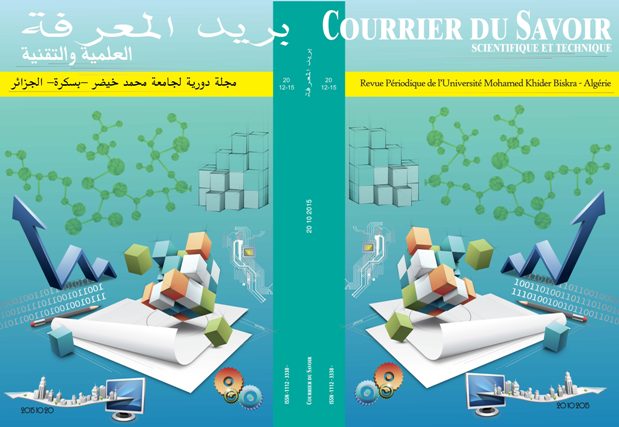EFFECT OF THE QUENCHING IN WATER OF THE CEMENTITIOUS MATERIALS SUBJECTED TO FIRE
Résumé
Many studies have permitted the analysis of the mechanical behavior of concrete subjected to high temperatures. However, no one has done any work on the effect of re-humidification of cementitious materials exposed to a real fire. This is the first study. To better simulate the effects of a real fire, a test with wood fire is developed. Different cementitious materials (hardened cement pastes, and mortar) are subject to this heating for 1hour. The results of tests indicate that:
- The average resistance loss is in the order of 60% after exhibition in fire.
- The re-humidification (sudden quenching in water) allowed a recovery of mass about 10% and consequently a gain of compressive strength about 40%.
- Internal micro-structure analysis of cement pastes studied by XRD and the observation by a scanning electron microscope (SEM) shows that after the re-humidification, the cement rehydrates again (formation of Portlandite and CSH). Those observations explain the increase mechanical strength.
Références
[1] Serdar, A., Halit, Y., Bulent, B.: High temperature resistance of normal strength and autoclaved high strength mortars incorporated polypropylene and steel fibers, Construction and Building Materials, 22, pp. 504–512, 2008.
[2] Fu, Y.F., Wong, Y.L., Poon, C.S., Tang, C.A., Lin, P.: Experimental study of micro/macro crack development and stress-strain relations of cement-based composite materials at elevated temperatures, Cement and Concrete Research, 33, pp. 789-797, 2004.
[3] Khoury, G.A., Grainger, B.N., Sullivan, P.J.E.: Strain of concrete during first cooling from 600°C under load, Magazine of concrete research, 38, pp. 3-12, 1986.
[4] Kanema Tshimanga, M. : Influence des paramètres de formulation sur le comportement à haute température des béton, Thèse de doctorat, Université de Cergy-Pontoise, 2007.
[5] Schneider, U., Diederich, U., EHM, C.: Effect of temperature on steel and concrete for PCRV’S, Nuclear engineering and design, 67, pp. 245-258, 1981.
[6] Noumowe, N.A. : Effet de hautes températures (20-600°C) sur le béton - Cas particulier du béton à hautes performances, Thèse de doctorat, INSA de Lyon, 1995.
[7] Alarcon-Ruiz, L., Platret, G., Massieu E. A., Ehrlacher: The use of thermal analysis in assessing the effect of temperature on a cement paste, Cement and Concrete research, 35, pp. 609-613, 2005.
[8] Castellote, M., Alonso, C., Andrade, C., Tirillas, X., Campo, J.: Composition and microstructural changes of cement pastes upon heating, as studied by neutron diffraction, Cement and concrete research, 34, pp. 1633-1644, 2004.
[9] Alonso, C., Fernandez, L.: Deshydration and rehydration processes of cement paste exposed to high temperature environments, Journal of materials sciences, 39, pp. 3015-3024, 2004
[2] Fu, Y.F., Wong, Y.L., Poon, C.S., Tang, C.A., Lin, P.: Experimental study of micro/macro crack development and stress-strain relations of cement-based composite materials at elevated temperatures, Cement and Concrete Research, 33, pp. 789-797, 2004.
[3] Khoury, G.A., Grainger, B.N., Sullivan, P.J.E.: Strain of concrete during first cooling from 600°C under load, Magazine of concrete research, 38, pp. 3-12, 1986.
[4] Kanema Tshimanga, M. : Influence des paramètres de formulation sur le comportement à haute température des béton, Thèse de doctorat, Université de Cergy-Pontoise, 2007.
[5] Schneider, U., Diederich, U., EHM, C.: Effect of temperature on steel and concrete for PCRV’S, Nuclear engineering and design, 67, pp. 245-258, 1981.
[6] Noumowe, N.A. : Effet de hautes températures (20-600°C) sur le béton - Cas particulier du béton à hautes performances, Thèse de doctorat, INSA de Lyon, 1995.
[7] Alarcon-Ruiz, L., Platret, G., Massieu E. A., Ehrlacher: The use of thermal analysis in assessing the effect of temperature on a cement paste, Cement and Concrete research, 35, pp. 609-613, 2005.
[8] Castellote, M., Alonso, C., Andrade, C., Tirillas, X., Campo, J.: Composition and microstructural changes of cement pastes upon heating, as studied by neutron diffraction, Cement and concrete research, 34, pp. 1633-1644, 2004.
[9] Alonso, C., Fernandez, L.: Deshydration and rehydration processes of cement paste exposed to high temperature environments, Journal of materials sciences, 39, pp. 3015-3024, 2004
Publiée
2016-01-18
Comment citer
MESSAOUDENE, IBRAHIM et al.
EFFECT OF THE QUENCHING IN WATER OF THE CEMENTITIOUS MATERIALS SUBJECTED TO FIRE.
Courrier du Savoir, [S.l.], v. 20, jan. 2016.
ISSN 1112-3338.
Disponible à l'adresse : >https://revues.univ-biskra.dz/index.php/cds/article/view/1439>. Date de consultation : 18 mai 2025
Rubrique
Articles


